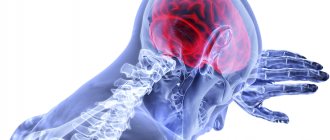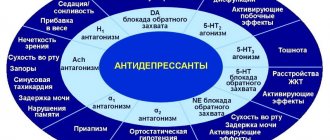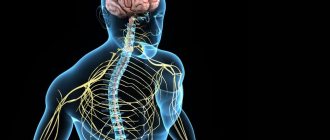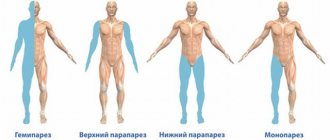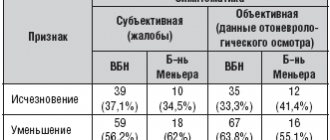What is the duration of treatment?
In the absence of additional risk factors, tamoxifen is prescribed for 5 years without interruption.
If at least one of the unfavorable prognosis factors is present, tamoxifen may be prescribed for up to 10 years. These factors include locally advanced breast cancer (T3-4), G3, the presence of HER2/neu expression or its amplification according to the results of the FISH reaction, a high level of Ki67, as well as the presence of pronounced lymphovascular invasion according to the results of histological examination.
Is it necessary to turn off ovarian function and what does it depend on?
Tamoxifen has its effect regardless of ovarian function.
Most often, ovarian suppression - ovarian suppression - is used in the following cases:
- age up to 45 years;
- presence of unfavorable prognosis factors.
Contraindications for use
- pregnancy;
- age under 18 years (safety and effectiveness in children not shown);
- thrombophlebitis;
- hypersensitivity to the components of the drug.
Use with caution when:
- ophthalmological pathology (including cataracts);
- liver diseases;
- leukopenia, thrombocytopenia.
What are the most common side effects?
The drug affects all organs and systems. The full range of side effects is always indicated in the official instructions for the drug, which is included in each package.
We will list the most common and/or important ones:
- headache and dizziness;
- visual impairment;
- thrombophlebitis, thromboembolism;
- stomach ache;
- menstrual irregularities, bleeding or discharge from the genital tract;
- feeling of heat, hot flashes;
- endometrial hyperplasia with long-term use;
- isolated cases of endometrial cancer.
Mexidol dosage
IM or IV (stream or drip). When administered by infusion, the drug should be diluted in 0.9% sodium chloride solution.
Mexidol® is administered slowly over 5–7 minutes in a stream, and dropwise at a rate of 40–60 drops per minute. The maximum daily dose should not exceed 1200 mg.
For acute cerebrovascular accidents, Mexidol® is used in the first 10–14 days - 200–500 mg IV drip 2–4 times a day, then 200–250 mg IM 2–3 times a day for 2 weeks .
For traumatic brain injury and the consequences of traumatic brain injuries, Mexidol® is used for 10-15 days intravenously at a dose of 200–500 mg 2–4 times a day.
For dyscirculatory encephalopathy in the decompensation phase, Mexidol® should be prescribed intravenously in a stream or drip at a dose of 200–500 mg 1–2 times a day for 14 days. Then IM 100–250 mg/day over the next 2 weeks.
For a course of prophylaxis of discirculatory encephalopathy, the drug is administered intramuscularly at a dose of 200–250 mg 2 times a day for 10–14 days.
For mild cognitive impairment in elderly patients and anxiety disorders, the drug is used intramuscularly at a daily dose of 100–300 mg/day for 14–30 days.
In case of acute myocardial infarction, as part of complex therapy, Mexidol® is administered intravenously or intramuscularly for 14 days, against the background of traditional therapy for myocardial infarction, including nitrates, beta-blockers, angiotensin-converting enzyme (ACE) inhibitors, thrombolytics, anticoagulant and antiplatelet agents, as well as symptomatic means according to indications.
In the first 5 days, to achieve maximum effect, it is advisable to administer the drug intravenously; in the next 9 days, Mexidol® can be administered intramuscularly.
Intravenous administration of the drug is carried out by drip infusion, slowly (to avoid side effects) in a 0.9% sodium chloride solution or 5% dextrose (glucose) solution in a volume of 100–150 ml for 30–90 minutes. If necessary, a slow jet injection of the drug, lasting at least 5 minutes, is possible.
The drug is administered (intravenous or intramuscular) 3 times a day, every 8 hours. The daily therapeutic dose is 6-9 mg/kg body weight per day, a single dose is 2-3 mg/kg body weight. The maximum daily dose should not exceed 800 mg, single dose - 250 mg.
For open-angle glaucoma of various stages, as part of complex therapy, Mexidol® is administered intramuscularly at 100–300 mg/day, 1–3 times a day for 14 days.
For alcohol withdrawal syndrome, Mexidol® is administered in a dose of 200–500 mg intravenously or intramuscularly 2–3 times a day for 5–7 days.
In case of acute intoxication with antipsychotic drugs, the drug is administered intravenously at a dose of 200-500 mg/day for 7-14 days. In acute purulent-inflammatory processes of the abdominal cavity (acute necrotizing pancreatitis, peritonitis), the drug is prescribed on the first day both in the preoperative and postoperative periods. The administered doses depend on the form and severity of the disease, the prevalence of the process, and variants of the clinical course. The drug should be discontinued gradually only after a stable positive clinical and laboratory effect.
For acute edematous (interstitial) pancreatitis, Mexidol® is prescribed 200–500 mg 3 times a day, intravenously (in 0.9% sodium chloride solution) and intramuscularly. Mild severity of necrotizing pancreatitis - 100-200 mg 3 times a day intravenously (in 0.9% sodium chloride solution) and intramuscularly. Moderate severity - 200 mg 3 times a day intravenously (in 0.9% sodium chloride solution). Severe course - in a pulse dosage of 800 mg on the first day with a double dose regimen; then 200–500 mg 2 times a day with a gradual reduction in the daily dose. Extremely severe course - at an initial dosage of 800 mg/day until the manifestations of pancreatogenic shock are persistently relieved, after stabilization of the condition, 300-500 mg 2 times a day intravenously (in 0.9% sodium chloride solution) with a gradual decrease in the daily dosage.
What are the management tactics for the development of endometrial hyperplasia?
Many people are concerned about the development of endometrial hyperplasia while taking tamoxifen, as well as the possibility of developing endometrial cancer.
The risk of developing endometrial cancer increases in the group of postmenopausal women. For other patients, this risk does not differ from the general population.
With the development of endometrial hyperplasia, discontinuation of tamoxifen is not required. In the absence of clinical manifestations of hyperplasia - bloody discharge from the genital tract, menorrhagia - separate diagnostic curettage is not necessary.
To determine the tactics of examination and treatment, you need to contact a gynecologist. After a survey, examination and carrying out the necessary instrumental research methods, the gynecologist decides to conduct a separate diagnostic curettage or dynamic observation.
Coordinate your vitamin intake
Thoughtless use of various supplements and vitamin complexes not only does not help to cope with the disease or prevent it, but also contributes to the development of malignant tumors. Scientists have proven this hypothesis. As an example, let's take the effect of vitamin E. On the one hand, it acts as a powerful antioxidant that protects the body from the action of harmful molecules. But on the other hand, large doses of vitamin E have the opposite effect on oxidative processes. As a result, the cells are damaged.
Therefore, you should not select vitamins on your own and use them without a doctor’s prescription. You should definitely consult a doctor who will give the necessary recommendations. After all, it should be understood that the biologically active substances that the human body so needs have their own special characteristics. They can be either fat-soluble or water-soluble. Some of them are not absorbed so effectively, while others, on the contrary, are actively broken down and enter the blood.
It is worth considering that some vitamins are not synthesized by the body. Therefore, it is extremely important to know which biologically active substance concentration levels should be exceeded.
Only properly selected vitamins will help in the fight against cancer. These substances take an active part in the body's recovery processes and stimulate human protective properties.
What drugs can or cannot be taken during tamoxifen therapy?
Since the drug is taken for a very long period of time, you need to know which drugs should be taken with great caution and which are contraindicated.
Carefully:
- coumarin anticoagulant drugs - increased risk of bleeding;
- drugs that reduce calcium excretion - hypercalcemia may develop;
- selective serotonin reuptake inhibitors (antidepressants) - reducing the effectiveness of tamoxifen.
A more complete list of interactions between tamoxifen and other medications can be found in the relevant sections of the instructions for the drug on the websites rls.ru, vidal.ru and similar ones.
Restriction in food consumption
Dietary nutrition for cancer patients significantly improves treatment results and helps strengthen the human immune system. But speaking of contraindications for cancer, many patients face the problem of poor nutrition. Which foods help restore the body, and which harm it?
Fatty, fried, spicy foods never have a positive effect on the condition of even an absolutely healthy person. Eat in small portions, but often, eat more vegetables and fruits, drink a lot of water - all this will ensure the proper functioning and normal functioning of all internal organs.
Among the most useful vegetables and fruits when diagnosing a malignant tumor, oncology specialists identify beets, broccoli, avocado, basil, nuts, sesame seeds, flaxseed, celery, onions, carrots, fennel, garlic, ginger, pomegranate, blackberries, pears, cinnamon, raspberries , plums, prunes, apples.
Speaking about a number of contraindications for cancer, you should provide a list of foods that are undesirable for consumption:
- carbonated (especially sweet) drinks;
- various bouillon cubes and artificial seasonings;
- soy sauce;
- mayonnaise (excluding homemade mayonnaise);
- fast food products;
- sausages and sausages (excluding home-cooked options);
- products that contain monosodium glutamate and a large amount of vitamin E.
It should be understood that the nature of nutrition plays a significant role in the development of both malignant and benign tumors. Patients diagnosed with cancer are contraindicated from consuming fatty and high-calorie foods, preservatives, smoked, sweet and highly salty foods.
It is worth giving up refined sugar, processed foods, and especially fast food. But patients should increase the amount of protein.
How can you enhance the antitumor effect of hormone therapy and achieve more lasting results?
According to research, indole-3-carbinol enhances the effect of tamoxifen against tumor cells, promoting their death, and also prevents the appearance of new cells with increased proliferative activity. This compound is the main active ingredient of Promisan, which is recommended for the correction of metabolic disorders in patients with cancer and for the prevention of the development of breast, ovarian and endometrial cancer.
Very often, patients have a question: is it possible to take Promisan during tamoxifen therapy?
If you look at the list of interactions between tamoxifen and other medications, then there are no contraindications for taking Promisan during tamoxifen therapy.
Indole-3-carbinol and epigallocatechin-3-gallate, which form the basis of Promisan, demonstrate antiproliferative effects on estrogen-dependent organs and tissues and, therefore, may represent a potential combination with hormones in the treatment of estrogen-sensitive breast cancer.
Indications for use of Mexidol
- acute cerebrovascular accidents;
- traumatic brain injury, consequences of traumatic brain injury;
- iscirculatory encephalopathy;
- autonomic dystonia syndrome;
- mild cognitive disorders of atherosclerotic origin;
- anxiety disorders in neurotic and neurosis-like conditions;
- acute myocardial infarction (from the first day) as part of complex therapy;
- primary open-angle glaucoma of various stages, as part of complex therapy;
- relief of withdrawal syndrome in alcoholism with a predominance of neurosis-like and vegetative-vascular disorders;
- acute intoxication with antipsychotic drugs;
- acute purulent-inflammatory processes of the abdominal cavity (acute necrotizing pancreatitis, peritonitis) as part of complex therapy.
